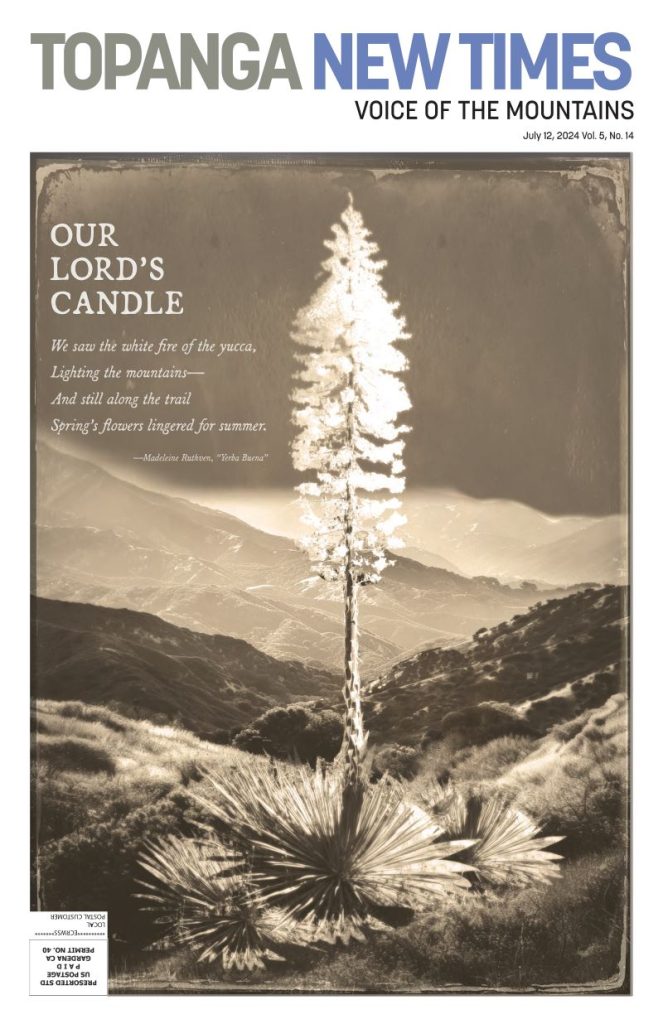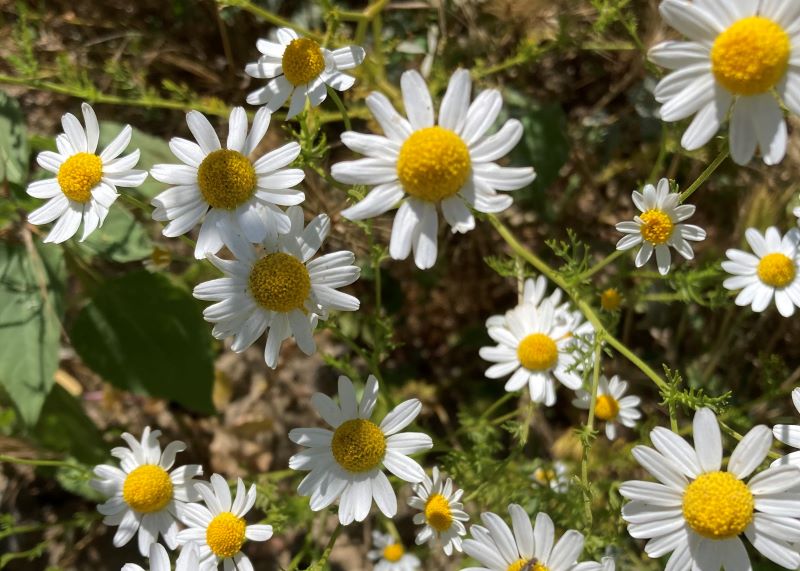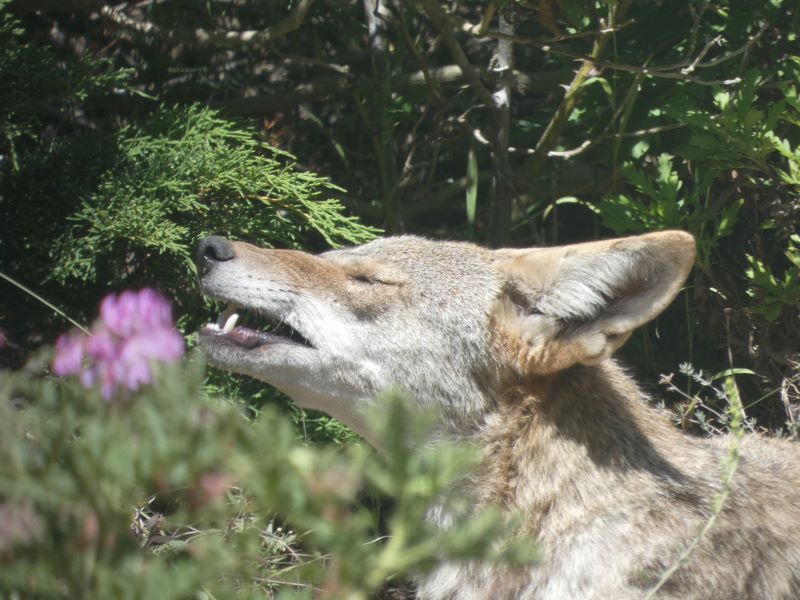
Hesperoyucca whipplei, the stately chaparral yucca, or Lord’s candle, is so abundant in the Santa Monica Mountains that we sometimes forget to take a look at this remarkable, beautiful mountain sentinel. Cover concept and design by Urs Baur.
Too hot. A persistent heat wave is fueling an early and troubling fire season, with big fires up north and a plethora of smaller ones closer to home. Elevated humidity levels and the absence of high winds is a help, but fires can generate their own winds if they have enough fuel.
Coastal fog has kept the coastal slope side of Topanga and the Santa Monica Mountains from overheating, but record-breaking hot weather continues inland, and that means elevated fire risk continues, too. The high pressure generating this extreme heatwave is beginning to weaken and shift farther eastward, bringing a welcome cooling trend this weekend, but when the Topanga New Times went to press, excessive heat warnings were still in place..
Malibu Search and Rescue volunteers grappled with record numbers of heat related emergencies in the Santa Monica Mountains National Recreation Area over the Fourth of July weekend.

The combination of high heat and poor air quality are health concerns for everyone, not just people who work or recreate outside.Anyone who has to be out in the heat should consider carrying electrolytes as well as water, in the form of sports drinks or salt tablets. It’s important to know the symptoms of heat exhaustion and heat stroke and to limit exposure to heat. Heat illness can be life threatening and it doesn’t only affect humans; dogs are susceptible, and they can also experience second degree burns on their paw pads from superheated pavement when the weather is hot. This is not the time for hiking adventures or any prolonged outdoor activity.
It’s not a great time for a cooling trip to the beach, either. Many local beaches, including Topanga and many Malibu beaches, continue to have unsafe bacteria levels. It’s a good idea to check with the county’s water quality website before hitting the surf: publichealth.lacounty.gov. Another good resource is Heal the Bay’s beach report card: https://beachreportcard.org

Water quality is a major concern for the Malibu Creek Ecosystem Restoration Project. This multi-agency effort includes plans to remove the old and long-defunct Ridge dam in Malibu Canyon and restore connectivity for species like the endangered southern steelhead trout. MCERP recently announced a new community science program connected to the project, designed to enable citizen scientists to help monitor the restoration and its results by taking photos at several designated sites along the creek and uploading them. The program’s first photo capturing site is now up and running in Malibu Creek State Park on Crags Road Trail about a quarter mile in from the parking lot trailhead, above the confluence of Malibu Creek and Las Virgenes Creek. Anyone passing by is encouraged to look for the signage and follow the instructions, but it might be a good idea to wait until after the extreme heat warning for our area is lifted.
Governor Gavin Newsom announced the state’s support for the return of over 2,800 acres of ancestral land to the Shasta Indian Nation. The proposed return is part of the ongoing effort to right at least some of the historical wrongs committed against the Native communities of California.
“This work is a down payment on the state’s commitment to do better by the Native American communities who have called this land home since time immemorial,” Newsom stated. “By listening to and working with tribes across the state, including to return ancestral homelands and restore the environment, we are healing deep wounds and rebuilding trust between our people.” It’s a small step, but little by little one can travel far, even when the destination seems impossibly far away.
And speaking of traveling, it’s about to get more difficult for Topangans and Topanga visitors and commuters, to get into—and out of—the Valley. Caltrans has announced daytime lane closures on Topanga Canyon Blvd. in Woodland Hills from 6am to 3pm, Monday through Friday, beginning July 10. The closures are part of the ongoing repaving project. All lanes will reopen at 3 p.m. Make sure to add a little extra time for travel delays. It’s a jungle out there—a really hot one—but things could be worse.
Stay safe, be well, keep cool.





